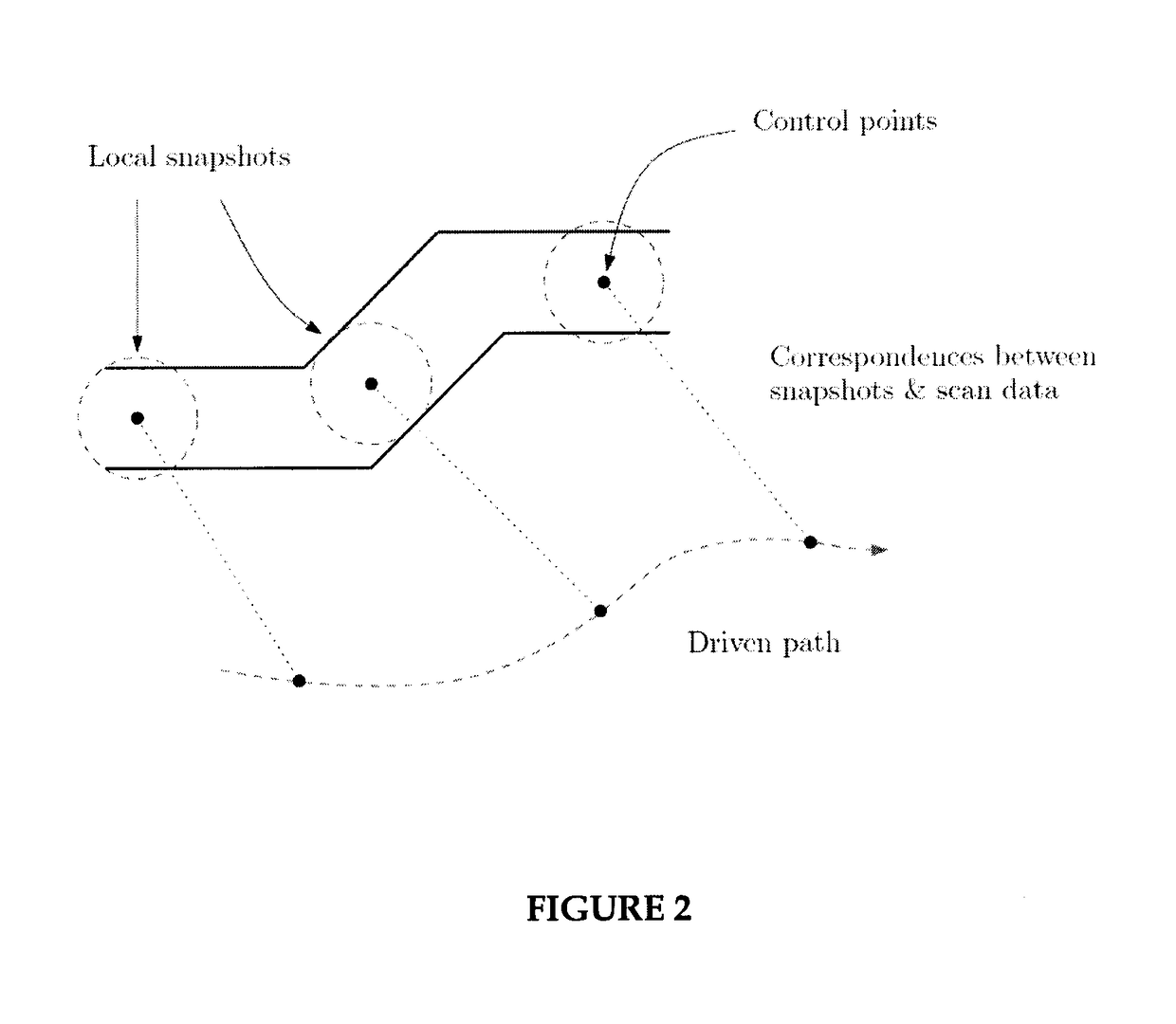A method and system for georeferencing underground data
a georeferencing system and underground data technology, applied in the field of georeferencing underground data, can solve the problems of drift error, scanner on its own, no way of knowing its location within an externally-defined co-ordinate system,
- Summary
- Abstract
- Description
- Claims
- Application Information
AI Technical Summary
Benefits of technology
Problems solved by technology
Method used
Image
Examples
Embodiment Construction
[0047]Referring to FIG. 1, a solid outline representing a top-down view of a portion of a mine is shown. The dashed outline represents a map created using a mobile scanner exhibiting drift error. This map is aligned (georeferenced), but still contains drift error.
[0048]The method of the invention includes two phases: (i) a control point profiling, and (ii) nonrigid transformation. The advantage of nonrigid transformation is that it may be used for georeferencing and / or error correction while rigid transformation may be used for georeferencing only. Each of the above two phases is now described more fully.
[0049]Control point (tag) profiling is the process of visiting each control point with a laser scanner and recording a “snapshot” of the local area. This part of the process therefore obtains a set of easily-recognizable and globally-positioned landmarks that can be used to georeference subsequently scanned data. For each control point:[0050]1. a laser scanner is precisely aligned w...
PUM
 Login to View More
Login to View More Abstract
Description
Claims
Application Information
 Login to View More
Login to View More - Generate Ideas
- Intellectual Property
- Life Sciences
- Materials
- Tech Scout
- Unparalleled Data Quality
- Higher Quality Content
- 60% Fewer Hallucinations
Browse by: Latest US Patents, China's latest patents, Technical Efficacy Thesaurus, Application Domain, Technology Topic, Popular Technical Reports.
© 2025 PatSnap. All rights reserved.Legal|Privacy policy|Modern Slavery Act Transparency Statement|Sitemap|About US| Contact US: help@patsnap.com



